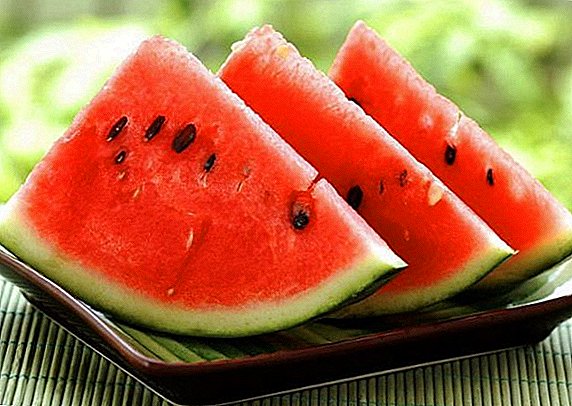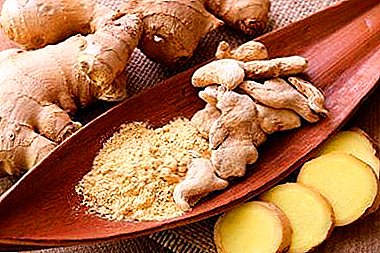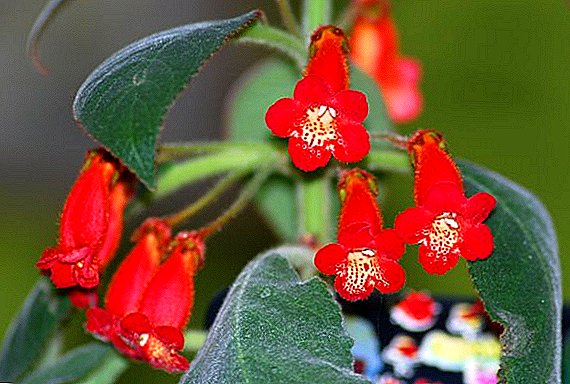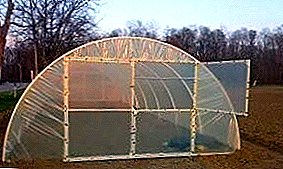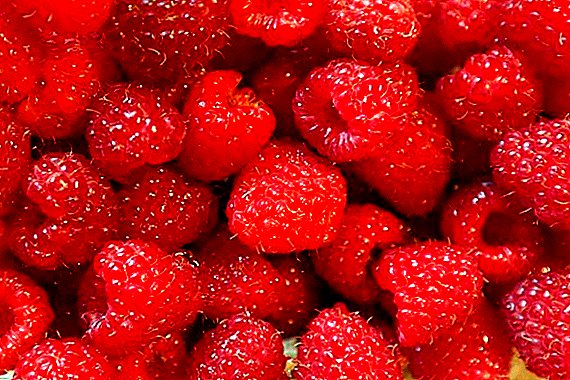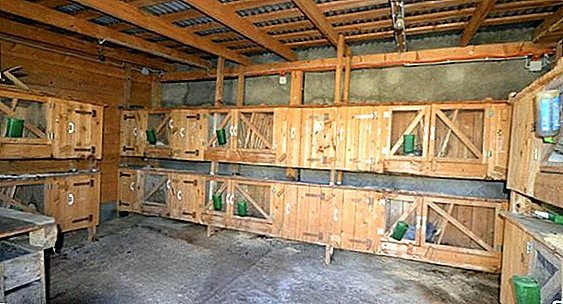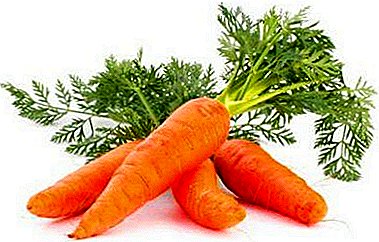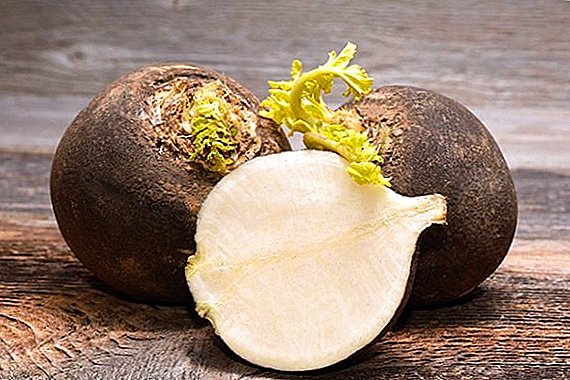 Black radish is a frequent inhabitant of the gardens of many gardeners. People love it and give birth to their beds for their savory, pungent taste, unique, rich in trace elements, composition and ease of cultivation.
Black radish is a frequent inhabitant of the gardens of many gardeners. People love it and give birth to their beds for their savory, pungent taste, unique, rich in trace elements, composition and ease of cultivation.
Everyone who cares about their health, those who prefer prevention and treatment of diseases with natural products, and especially those who have children - this root crop is obligatory for cultivation.
It is about when, where and how to plant black radish, we will discuss in our article. We will discuss all the details on the care of the plant, as well as learn about the rules for collecting and storing its fruits.
General characteristics of culture
There are different varieties for early and for later sowing. it cold-resistant plant, that is, it grows beautifully in the ground until frost and is perfectly preserved throughout the winter. You can get seeds only in the second year of growth, since the growing season has a two-year period.  Main distinctive features of this species is its round shape, black skin color, white juicy flesh and pronounced sharp taste.
Main distinctive features of this species is its round shape, black skin color, white juicy flesh and pronounced sharp taste.
The fruit forms and ripens completely 3-4 months after the first shoots appear on the surface of the earth; on average, it weighs from 200 to 600 g. It is completely hidden in the soil, leaving only oblong, bright green, wavy leaves at the edges.
Did you know? The fruits of black radish have the richest composition of beneficial sugars, plant fiber, proteins, mineral salts and essential oils. They are very rich in such beneficial elements as calcium, sulfur, magnesium and potassium.
The healing properties of this root are as follows:
- He copes with bronchitis.
- Beneficial effect on the gastrointestinal tract.
- Its juice is useful in treating vascular and heart diseases.
- Helps to cope with problems of the liver and gall bladder.
- Perfectly stimulates a healthy appetite.
- Soothes and tones the nervous system.
The rules of planting radish
If you are finally convinced that this vegetable is absolutely necessary for you and your family, you should think about how to grow black radish in your garden. There are simple rules and recommendations, following which you will cope with this task perfectly well.

When to plant?
To answer this question, you need to decide when you want to receive the fruits:
- there is early varieties. They are distinguished by small fruits and planted them in March to harvest in July.
- Mid Ripe Radish plant in the period from late April to mid-May. The fruits will then be ready for harvest by the end of September. There are also mid-season varieties that need to be planted no earlier than July.
- Late-season radish you need to plant in the middle of summer, so that by the end of autumn to harvest and harvest a crop for the whole winter.
Important! On packages with seeds, the type of radish is always indicated and the time when these seeds should be planted in the ground. By adhering to these recommendations, you will avoid mistakes with the choice of time for planting. Minimize the risk of ruining the seeds or bringing the fruit to cracking.
Where to plant?
After you have identified a suitable variety for yourself and now you know when to sow your black radish, you should choose and prepare a plot.  For sowing radish you are perfect plot where previously grew solanaceous, pumpkin or legumes. She will be a great mate for potatoes, onions, dill, lettuce. The main thing is not to plant it in the same place where cabbage, turnip, radish, rutabaga or radish were recently grown. It is necessary to observe crop rotation.
For sowing radish you are perfect plot where previously grew solanaceous, pumpkin or legumes. She will be a great mate for potatoes, onions, dill, lettuce. The main thing is not to plant it in the same place where cabbage, turnip, radish, rutabaga or radish were recently grown. It is necessary to observe crop rotation.
This plant loves a lot of light, so you have to take care of preparing a well-lit area and windblown territory. Before sowing, care must be taken to fertilize the soil. Mineral fertilizers and humus will serve you well.
Important! It is strongly not recommended to add fresh manure to the soil. This can cause cracks in the fruit, as well as an active attack of pests.
Before sowing, the ground should be previously dredged to a depth of about 35 cm, fertilizing with the following composition:
- a glass of ash;
- superphosphate (3 tbsp.);
- potassium chloride (1 tbsp.);
- urea (1 tbsp. l.).

How to plant?
To begin, you will need to prepare a few beds at a distance of 30-40 cm from each other. Dig shallow holes on each bed, keeping a distance of approximately 15 cm. In each well, lower several seeds and cover with earth. After that, the wells must be carefully poured and sprinkled with sawdust or ash to retain moisture. The first shoots should appear within a week.
Learn more about the features of the cultivation and use of radishes.
Care features
Black radish is an unpretentious plant and the process of its cultivation will not require from you strong physical and time expenditures. The main tasks for the care of this plant are disclosed in the following paragraphs.
Thinning
The first time to thin the beds will need after the appearance of the first 3-4 leaves of greenery above the ground. Loosening will need to be between the furrows and between the holes. In the future, be sure to regularly thin out your beds with radish, making sure that the distance between the plants is not less than 15 cm.  The thickening of the beds leads to a large number of problems associated with changing the shape and curvature of the fruit, infection with various diseases and attacks of pests.
The thickening of the beds leads to a large number of problems associated with changing the shape and curvature of the fruit, infection with various diseases and attacks of pests.
Did you know? If, at the moment of growth and vision of the root crop, it is provided with food only through the central root, removing additional lateral roots, by rocking it in the ground, the radish grows smaller, and much more juicy.
Watering
Should not be allowed overdrying of landin which the radish grows. After all, the quality and taste of its fruits is largely depends on humidity soil. Regularly water the land and irrigate the greens of your plants - this will be the key to a healthy, juicy harvest. The clay soil, the more often it is necessary to water it.
Before the first shoots ascend, it is necessary to water once every two days. After that, irrigation should be done at least once a week. After watering the land will be useful to loosen. 
Top dressing
The first dressing is usually done after the first few young leaves of the plant have appeared above the ground. Somewhere in a month comes the turn of the second time. In the future, fertilizing may be needed in case of disease or wilting of the plant.
Top dressing can be done with the same solution with which we fertilized the soil before sowing seeds: potassium chloride (16 g), superphosphate (60 g) and urea (20 g). Fertilizer consumption is made at the rate of 1 bucket on 15 m beds.
As already stated above, mineral fertilizers are considered to be the favorite “delicacy” of this plant. If you want to fertilize and irrigate the soil, you can use fertilizers in the form of solutions. If the soil moisture is rather high, it is advisable to use a dry form of mineral fertilizers.
For good growth and high-quality harvest, you can also use such commercial fertilizers, for example, "Agricola 4".
Important! Do not recommend to fertilize the land in which the black radish grows, with organic fertilizers. This adversely affects the quality and shelf life of fruits.
Protection against diseases and pests
Black radish varieties are subject to pests such as carrot fly, cruciferous flea, aphid, cabbage leaf beetle, rapeseed beetle and slugs. In addition, they can become infected with various fungal diseases and viruses.  In order to protect your plants from these misfortunes, it is worth carrying out preventive treatment. folk remedies. For example:
In order to protect your plants from these misfortunes, it is worth carrying out preventive treatment. folk remedies. For example:
- soap and water solution;
- tinctures of wormwood and celandine;
- vinegar solution (one spoon per 10 liters of water);
- a mixture of ash, lime and pepper, diluted in water;
- wet leaves can be sprinkled with clean ash, tobacco dust or tansy.
There are also purchased chemical and biological products, such as "Lipocid", "Fitoverm", "Inta-vir", anti-flea shampoos (2-3 caps per bucket of water) for spraying.
When growing radish, you can also face some problems, the occurrence of disease or the invasion of pests.
Harvesting and storage
Planting time of black radish directly affects the timing of its harvest. Early varieties begin to gather from late summer, mid-season and late throughout the fall.  Late varieties are suitable for long-term storage throughout the winter; they can last up to two hundred days. The main thing is to harvest before it starts to freeze.
Late varieties are suitable for long-term storage throughout the winter; they can last up to two hundred days. The main thing is to harvest before it starts to freeze.
Important! The use of black radish is contraindicated during pregnancy, as well as with an ulcer.
Before you put the radish in a cool (+ 3 ° C) dark place for storage for the whole winter (the cellar is perfect), its separated from the leaves and dried a little. Radish can be well stored in the refrigerator. In the boxes, radish is poured with ash, chalk or sand. Sometimes, before storage, each fruit is dipped in a clay solution, which, after drying, forms a protective layer on the skin surface.
Black radish is unique in its amazing healing properties. After reading the article and making sure that this is a very unpretentious plant, you can safely plant it in your garden, this root crop will be a companion to a healthy, happy life of yours and your loved ones.


